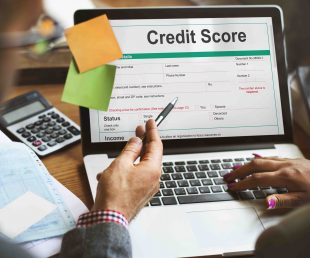While there are plenty of different budgeting strategies to try, my personal favorite is the zero-sum budget. This type of budget isn’t hard to implement, nor does it require fancy software or third-party support. With a zero-sum budget, you can transform your personal finances with nothing more than pen and paper.
Most importantly, zero-sum budgeting teaches you to use your most powerful wealth-building tool – your paycheck – to pay down debt and start saving.
If you’re unsure how zero-sum budgeting works, here’s the basic rundown:
With zero-sum budgeting, you base each month’s budget on last month’s income and expenses. By using last month’s income to plot out this month’s expenses, you can base your budget on your real income and not on projections.
Using pen and paper or a simple spreadsheet, you create a plan for each dollar you earn – every single month. By “giving each dollar a job,” you pay yourself first, eliminate waste, and maximize the money you work so hard to earn.
The goal of zero-sum budgeting is to end the month with zero. Since you plan your spending and based on last month’s income, you should theoretically end each month with nothing (or a slight buffer in your checking account).
Zero-Sum Budgeting in Real Life
Before we dive into how you can use a zero-sum budget to pay off debt, let’s talk about how this type of budget works in practice. Let’s look at a fictional family, the Martins, who took home $6,000 last month after taxes and pre-tax retirement contributions. When they tracked their actual spending for last month, it looked something like this:
Mortgage: $1,200
Groceries: $900
Car insurance: $100
Auto loan: $450
Cable TV and internet: $150
Cell phones: $200
Gas: $200
Utilities: $400
Clothes: $400
Entertainment: $500
Miscellaneous: $300
Restaurant meals: $600
Student loans: $300
Credit card payments: $500
Total: $6,000
As you can see, the Martins spent all they earned and then some. Worse, a lot of their spending was non-essential. The Martins weren’t making much progress on their debt, yet they were bleeding money on fun and “stuff.”
Once the Martins recognized where their money was going, they could begin a new month’s budget using last month’s income as a guide. Here’s what the next month’s zero-sum budget might look like:
Mortgage: $1,200
Groceries: $700
Car insurance: $100
Auto loan: $450
Cable TV and internet: $100
Cell phones: $150
Gas: $200
Utilities: $400
Clothes: $200
Entertainment: $300
Miscellaneous: $300
Restaurant meals: $300
Student loans: $300
Credit card payments: $1,500
Total: $6,000
Do you see what the zero-sum budget has done here? Almost overnight, the Millers have tripled the amount they’re able to put toward their credit card debt. They had to reduce some of their discretionary spending, but they’ll also pay off their debts faster this way.
How to Use Zero-Sum Budgeting to Pay Down Debt
The example above shows exactly why zero-sum budgeting is so powerful. If your finances are messy or you don’t have your priorities straight, sitting down to track your spending and create a zero-sum budget can make even the most complex issues seem crystal clear.
Unfortunately, old habits die hard… and following through with your zero-sum budget requires patience, discipline, and some work on your part. Writing down your spending goals isn’t enough; you have to follow through with those goals if you want your zero-sum budget to work.
This is especially true when it comes to paying off debt. You can plan to allocate $1,500 in monthly payments to your creditors (as the Martins did), but will you actually write that check?
If your goal is getting out of debt, following through is the key. Here are some tips that can help make your zero-sum budget more powerful than ever:
#1: PAY YOURSELF AND YOUR DEBTS FIRST.
If your goal is getting out of debt and saving for the future, savings and debt repayment need to be your top priority. That’s why you should take the most painful steps in your zero-sum budget at the beginning of the month. By getting the hardest payments out of the way, you’re setting up your zero-sum budget for success.
#2: BE PROACTIVE: DON’T “WAIT AND SEE” HOW THINGS SHAKE OUT.
One big mistake people frequently make with zero-sum budgeting is waiting to see “how things work out.” Let’s say you plan to pay $1,000 on your credit card bills, but wait to see if you can afford it at the end of the month. In this case, you’ve left an extra $1,000 sit in your checking account all month – just waiting to be spent. So if you went over your food or entertainment budget, the overage comes directly out of your debt payoff amount.
Waiting to “see how things work out” is the same as saying you don’t think they will. You’re setting yourself up to fail before you even start.
To avoid a budgeting fail, make sure you make your hefty debt and savings payments at the beginning of the month. If you wait to see if you mess things up, you probably will.
#3: TRACK YOUR SPENDING TO SEE WHERE YOU’RE AT, AT LEAST ONCE PER WEEK.
Whittling your spending down to save more isn’t easy. If you’ve been spending hundreds more than you should on food and dining out, for example, spending just $500 per month on food can be a challenge. The best way to safeguard your finances is to track your real-time spending regularly. This step is most important for fluctuating and projected expenses like food spending and entertainment.
Whatever your spending goals are in these categories, it’s up to you to stick with them. Checking in with your bank statements or online checking account at least once per week to see “where you’re at” is the best way to stay on track.
By checking in, you can see if you’ve overspent and need to rein things in. If it’s only the 10th of the month and you’ve already spent half of your food budget, for example, you can go on a food freeze or use up staples in your pantry to stretch your budget through the end of the month. On the flip side, you may not be able to gauge how you’re doing — and get yourself back on track — if you never check.
Final Thoughts
If your goal is getting out of debt, you have nothing to lose by giving a zero-sum budget a shot. There’s nothing to buy and nothing to download. You can make a simple zero-sum budget with nothing more than your previous month’s bank and credit card statements, a pen, and some paper.
Also remember that zero-sum budgeting (and anything worth doing, really) takes time. You may experience a few hiccups during the first few months, and that’s perfectly okay.
If you keep plugging away, keep tweaking, and dedicate yourself to making your budget work, it eventually will.
This article was written by Holly Johnson from The Simple Dollar and was licensed from NewsCred, Inc. Santander Bank does not provide financial, tax or legal advice and the information contained in this article does not constitute tax, legal or financial advice. Santander Bank does not make any claims, promises or guarantees about the accuracy, completeness, or adequacy of the information contained in this article. Readers should consult their own attorneys or other tax advisors regarding any financial strategies mentioned in this article. These materials are for informational purposes only and do not necessarily reflect the views or endorsement of Santander Bank.
![]()



